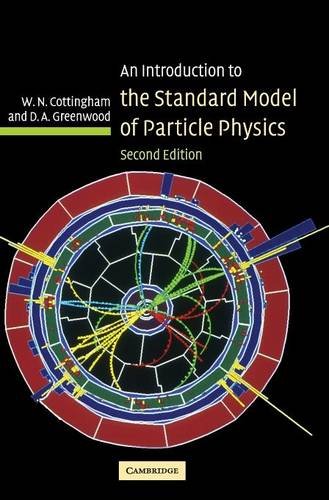An Introduction to the Standard Model of Particle Physics ebook
Par cassidy teresa le vendredi, mai 27 2016, 07:47 - Lien permanent
An Introduction to the Standard Model of Particle Physics by D. A. Greenwood, W. N. Cottingham


An Introduction to the Standard Model of Particle Physics D. A. Greenwood, W. N. Cottingham ebook
Format: pdf
Publisher: Cambridge University Press
Page: 294
ISBN: 0521852498, 9780521852494
Specifically for G a discrete quotient of SU ( 3 ) × SU ( 2 ) × U ( 1 ) this is the gauge-field part of the standard model of particle physics. Prior to his current Dryly noting “you know that you've entered the pop culture zeitgeist when you become an Internet meme,” Butler acknowledged public interest in the frontiers of particle physics, but emphasized the significance of the LHC's work in his introduction. Download An Introduction to the Standard Model of Particle Physics An Introduction to Particle Physics and the Standard Model - CRC. Shown in the figure to the left Unfortunately the electroweak symmetry forbids the introduction of explicit masses for fundamental particles from the outset, making it is challenging to have a theory which predicts the interactions correctly while allowing fundamental particle masses in accordance with observation. Butler is an experimental high-energy physicist, which places him at the forefront of efforts to test the validity of particle physics' “theory of almost everything,” the Standard Model. An Introduction to the Standard Model of Particle Physics book download. We currently have a model which describes all (excluding gravity) of this and it is called the Standard Model of particle physics. Cottingham is available at eBooks.com in several formats for your eReader. For structure group G = B U ( 1 ) the circle 2-group this yields the Kalb-Ramond .. Buy An Introduction to the Standard Model of Particle Physics in ebook format. Rather than giving you a standard introduction to the modern formulation of particle physics, I am going to take a historical approach. The authors try to motivate and introduce some basic concepts of category theory for an audience familiar with standard physics and in particular with quantum mechanics. The paper reviews philosophical aspects of the Higgs mechanism as the presently preferred account of the generation of particle masses in the Standard Model of elementary particle physics and its most discussed extensions.